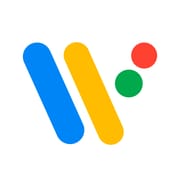<div class="tab-content-content"></div><div class="tab-content-content">Wear OS by Google, formerly known as Android Wear, is a smartwatch operating system developed by Google. It represents Google's foray into the wearables market, offering a platform that extends the functionality of Android smartphones to the user's wrist. Designed to provide convenience, personalization, and assistance throughout the day, Wear OS smartwatches have become an essential gadget for those looking to stay connected and track their fitness and health metrics without constantly reaching for their phones.</div><div class="tab-content-content">The core appeal of Wear OS lies in its seamless integration with the Google ecosystem, including services like Google Assistant, Google Maps, and Google Fit. This integration allows users to perform a wide range of actions directly from their wrist, such as setting reminders, sending texts, navigating to destinations, and tracking workouts. Google Assistant on Wear OS is particularly noteworthy for its voice recognition capability, enabling hands-free control and access to information instantly, which is invaluable when you're on the move or your hands are full.</div><div class="tab-content-content">Wear OS is designed to be highly customizable, offering a plethora of watch faces that users can switch between depending on their mood, style, or the information they want to see at a glance. This level of personalization extends to the straps and the watch itself, with various manufacturers offering their unique designs and features, ensuring that there's a Wear OS smartwatch for every taste and requirement.</div><div class="tab-content-content">Fitness and health tracking are central features of the Wear OS ecosystem. Google Fit, the platform's flagship health app, provides detailed monitoring of physical activities, heart rate monitoring, and goal setting, making it a comprehensive fitness companion. The recent updates have introduced even more health-focused features, such as sleep tracking and stress monitoring, emphasizing the growing importance of holistic health. The ability to track a wide range of workouts automatically, coupled with the heart rate sensor that is common in most Wear OS devices, ensures that users have a clear picture of their health and fitness levels.</div><div class="tab-content-content">Moreover, Wear OS smartwatches support third-party apps available through the Google Play Store, which significantly expands their functionality. From music streaming apps and payment services like Google Pay to fitness tracking and smart home control apps, the ability to install additional apps means that Wear OS can cater to a wide array of needs and preferences, making each smartwatch feel truly personal and versatile.</div><div class="tab-content-content">Despite its many strengths, Wear OS faces stiff competition from other smartwatch platforms, notably Apple's watchOS and Samsung's Tizen for wearables. However, Google's continuous improvements to Wear OS, including better battery life, enhanced performance, and more intuitive interactions, are closing the gap. The acquisition of Fitbit and the collaboration with Samsung to integrate the best of Tizen into Wear OS signal Google's commitment to advancing the platform and positioning it as a leading choice for Android users and beyond.</div><div class="tab-content-content">In conclusion, Wear OS by Google stands as a powerful extension of the Android ecosystem, offering users a smart, customizable, and health-conscious wearable experience. Its integration with Google's services, support for third-party apps, and a focus on health and fitness make it an appealing choice for anyone looking to enhance their digital lifestyle with a smartwatch. As Wear OS continues to evolve, it promises to bring even more innovative features and capabilities to users' wrists, further cementing its place in the competitive smartwatch market.</div>



 APK
APK